Anjali Gupta
GRAPHGINI: Fostering Individual and Group Fairness in Graph Neural Networks
Feb 20, 2024



Abstract:We address the growing apprehension that GNNs, in the absence of fairness constraints, might produce biased decisions that disproportionately affect underprivileged groups or individuals. Departing from previous work, we introduce for the first time a method for incorporating the Gini coefficient as a measure of fairness to be used within the GNN framework. Our proposal, GRAPHGINI, works with the two different goals of individual and group fairness in a single system, while maintaining high prediction accuracy. GRAPHGINI enforces individual fairness through learnable attention scores that help in aggregating more information through similar nodes. A heuristic-based maximum Nash social welfare constraint ensures the maximum possible group fairness. Both the individual fairness constraint and the group fairness constraint are stated in terms of a differentiable approximation of the Gini coefficient. This approximation is a contribution that is likely to be of interest even beyond the scope of the problem studied in this paper. Unlike other state-of-the-art, GRAPHGINI automatically balances all three optimization objectives (utility, individual, and group fairness) of the GNN and is free from any manual tuning of weight parameters. Extensive experimentation on real-world datasets showcases the efficacy of GRAPHGINI in making significant improvements in individual fairness compared to all currently available state-of-the-art methods while maintaining utility and group equality.
Test-Time Adaptation for Depth Completion
Feb 11, 2024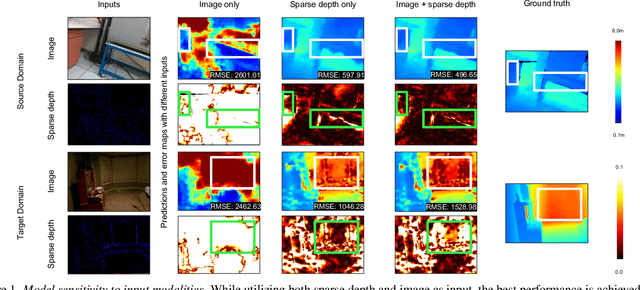
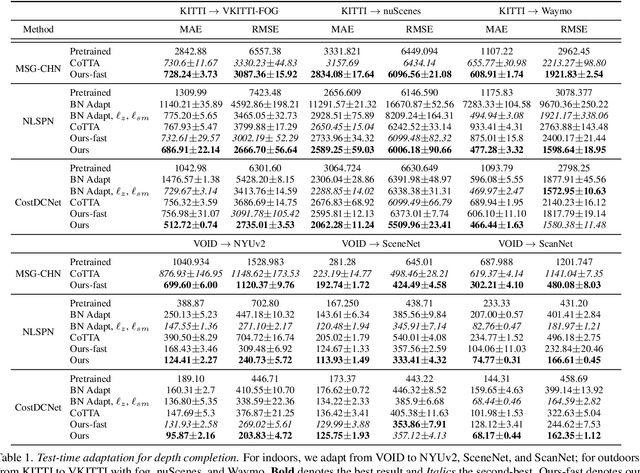
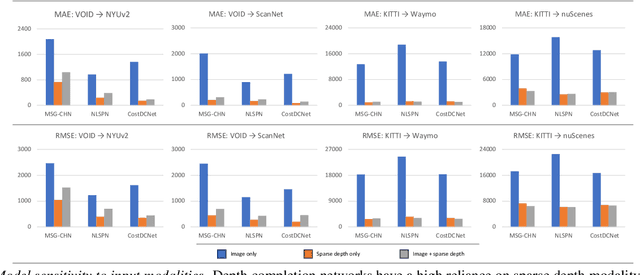
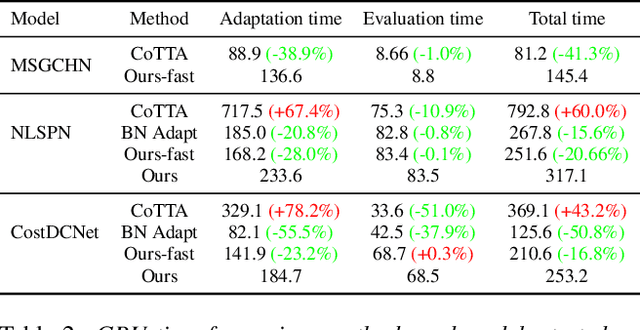
Abstract:It is common to observe performance degradation when transferring models trained on some (source) datasets to target testing data due to a domain gap between them. Existing methods for bridging this gap, such as domain adaptation (DA), may require the source data on which the model was trained (often not available), while others, i.e., source-free DA, require many passes through the testing data. We propose an online test-time adaptation method for depth completion, the task of inferring a dense depth map from a single image and associated sparse depth map, that closes the performance gap in a single pass. We first present a study on how the domain shift in each data modality affects model performance. Based on our observations that the sparse depth modality exhibits a much smaller covariate shift than the image, we design an embedding module trained in the source domain that preserves a mapping from features encoding only sparse depth to those encoding image and sparse depth. During test time, sparse depth features are projected using this map as a proxy for source domain features and are used as guidance to train a set of auxiliary parameters (i.e., adaptation layer) to align image and sparse depth features from the target test domain to that of the source domain. We evaluate our method on indoor and outdoor scenarios and show that it improves over baselines by an average of 21.1%.
Gigs with Guarantees: Achieving Fair Wage for Food Delivery Workers
May 07, 2022


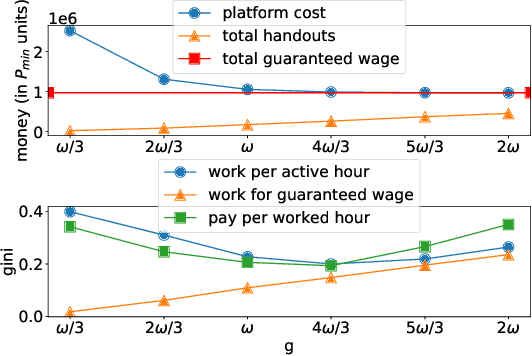
Abstract:With the increasing popularity of food delivery platforms, it has become pertinent to look into the working conditions of the 'gig' workers in these platforms, especially providing them fair wages, reasonable working hours, and transparency on work availability. However, any solution to these problems must not degrade customer experience and be cost-effective to ensure that platforms are willing to adopt them. We propose WORK4FOOD, which provides income guarantees to delivery agents, while minimizing platform costs and ensuring customer satisfaction. WORK4FOOD ensures that the income guarantees are met in such a way that it does not lead to increased working hours or degrade environmental impact. To incorporate these objectives, WORK4FOOD balances supply and demand by controlling the number of agents in the system and providing dynamic payment guarantees to agents based on factors such as agent location, ratings, etc. We evaluate WORK4FOOD on a real-world dataset from a leading food delivery platform and establish its advantages over the state of the art in terms of the multi-dimensional objectives at hand.
 Add to Chrome
Add to Chrome Add to Firefox
Add to Firefox Add to Edge
Add to Edge